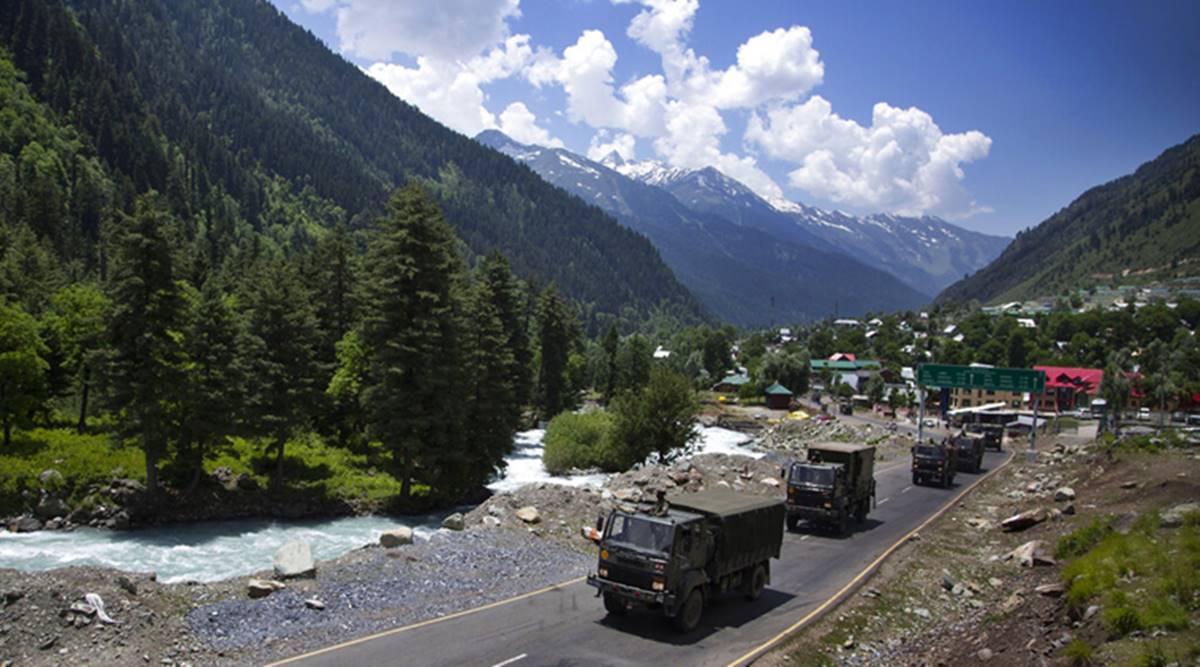 Depsang, which witnessed a three-week standoff in 2013, is not identified by the government as one of the five friction points with China, although it had raised the issue in previous talks.
Depsang, which witnessed a three-week standoff in 2013, is not identified by the government as one of the five friction points with China, although it had raised the issue in previous talks. ALTHOUGH GOVERNMENT officials expect a possible breakthrough in the 12th round of Corps Commander-level talks to be held soon on Gogra and Hot Springs, the two friction points where China continues to have platoon-sized troop strength on the Indian side of the Line of Actual Control (LAC), another sticking issue – related to Depsang Plains – is likely to take more time to resolve.
Depsang, which witnessed a three-week standoff in 2013, is not identified by the government as one of the five friction points with China, although it had raised the issue in previous talks. This despite China regularly creating problems for the Indian Army to access its patrolling limits in the region, sources said.
Contrary to claims of officials that India has not been able to access its traditional patrolling limits in Depsang for years, which include Patrolling Points 10, 11, 11A, 12 and 13, the sources told The Indian Express that the Indian troops reached their patrolling limits as late as January-February 2020, just months before the latest standoff began in May.
Since the standoff, Chinese troops have been coming in vehicles to block the Indian troops to move east of Bottleneck, which is 18 km inside from the LAC, the sources said. They, however, added that China does not have any permanent infrastructure in Depsang.
Depsang is the only region in eastern Ladakh where the Limit of Patrolling (LoP) is not the same as the LAC, and is much deeper inside the Indian territory. The area is strategically significant as it lies just 30 km southeast of the important Daulat Beg Oldie post and airstrip in the north, close to the Karakoram Pass.
Bottleneck is around 7 km east of Burtse, where the Army has a base. Burtse is on the Durbuk-Shyok-Daulat Beg Oldie road. The track going east from Burtse forks into two at the Bottleneck, which is the reason it is also called the Y-Junction. The track going north following the Raki Nala goes towards Patrolling Point 10, while the track going southeast is towards Patrolling Point 13.
Chinese troops, the sources said, come in vehicles to the Y-junction and block Indian troops from moving forward. India too, though, they said, is not allowing China to move west of the Bottleneck, as according to China the LAC passes through around 2 km before Burtse.
Sources said the number of face-offs between India and China have been on the rise over the past few years, including in Depsang. One reason, the officials said, was because India has improved its infrastructure in the region, and also inducted more military strength.
Till 2009-2010, sources said, both sides had very little military presence in the area, and there were “barely any face-offs”. Around 2014, a brigade was positioned in the Depsang area, and additional armoured and mechanised elements were also brought in later. China, too, increased its military presence.
“As our capacity grew, our presence increased,” an official said, adding, the increase in face-offs, “was bound to happen”.
Previously, the face-offs used to be a matter of chance, whenever patrolling parties of both the sides came face to face. As India’s infrastructure improved, the face-offs were deliberate. However, sources said, they were not violent as two sides would show banners to each other, stating that they were in the other country’s territory and move back. Depsang Bulge is one of the 12 areas in eastern Ladakh, which are either mutually disputed or where the two sides have differing perceptions of the LAC. The total area between the Indian perception of the LAC and the Chinese perception is 972 sq km. However, when measured from the LoP, which was accessed by India till February last year, the disputed area is smaller.
The patrolling limits are decided by the China Study Group, and Indian troops are not mandated to go beyond them.
- The Indian Express website has been rated GREEN for its credibility and trustworthiness by Newsguard, a global service that rates news sources for their journalistic standards.

